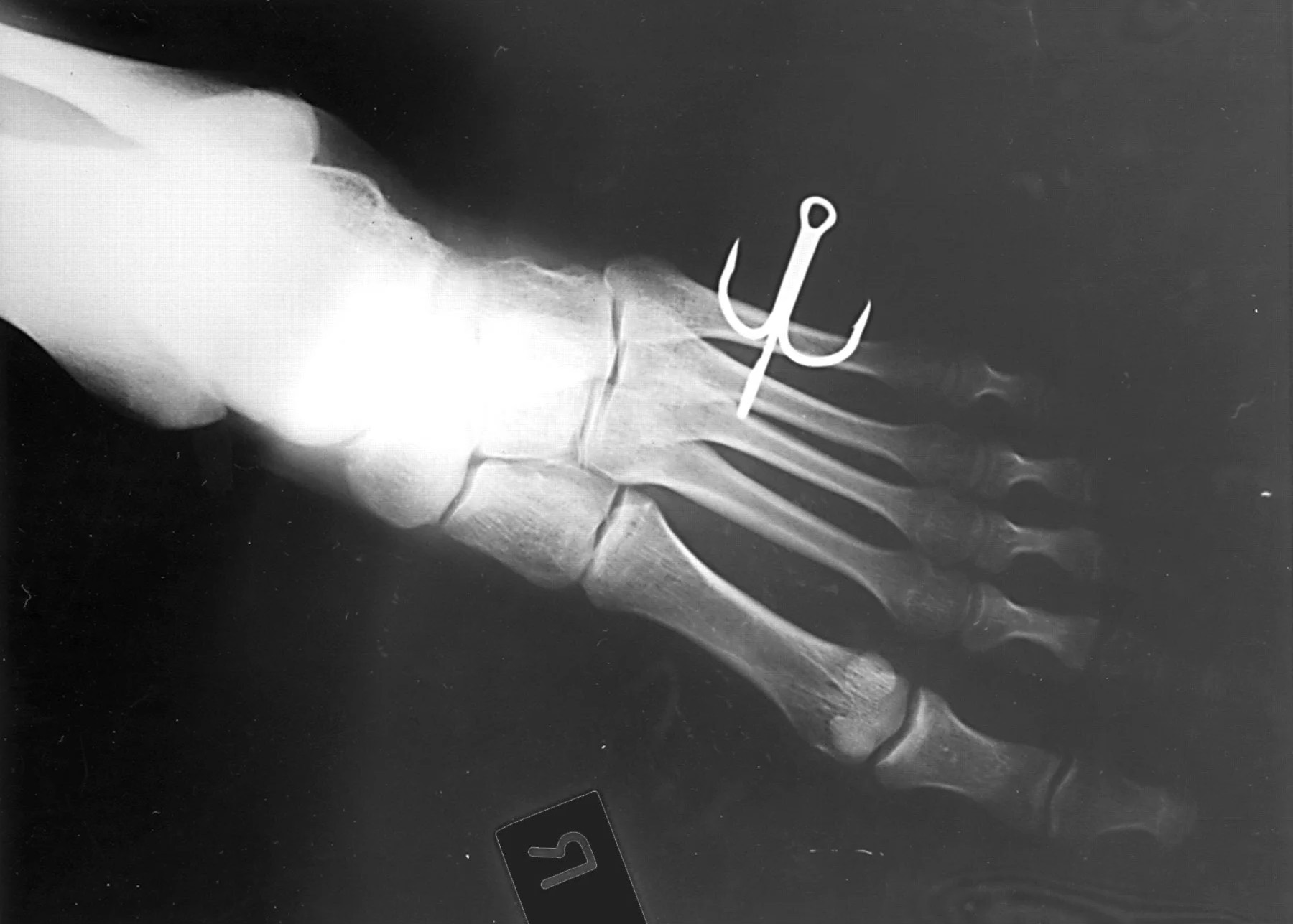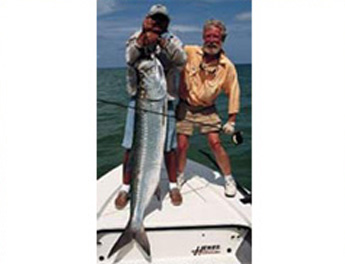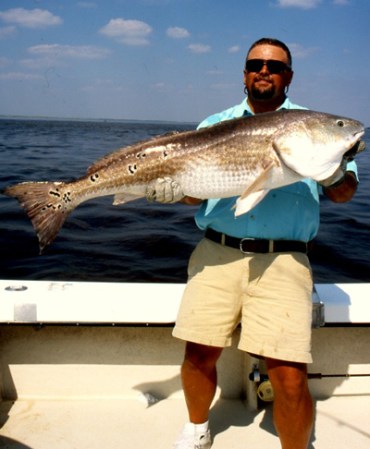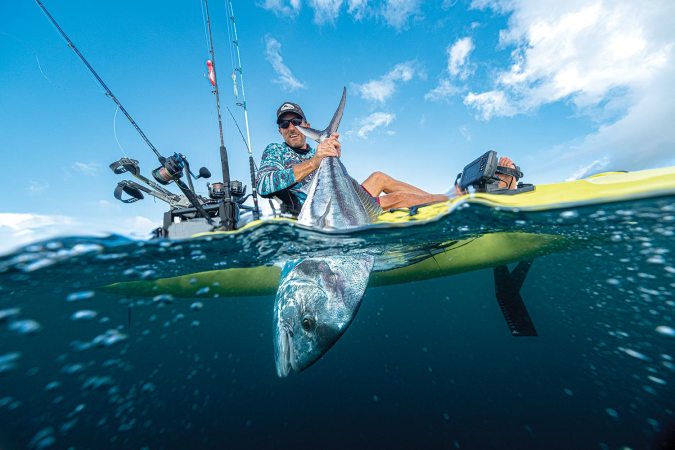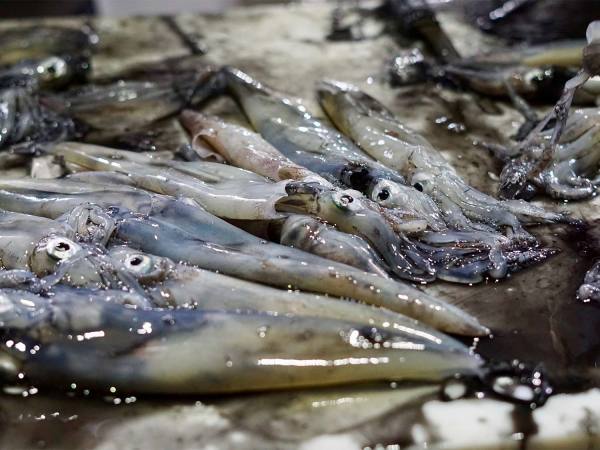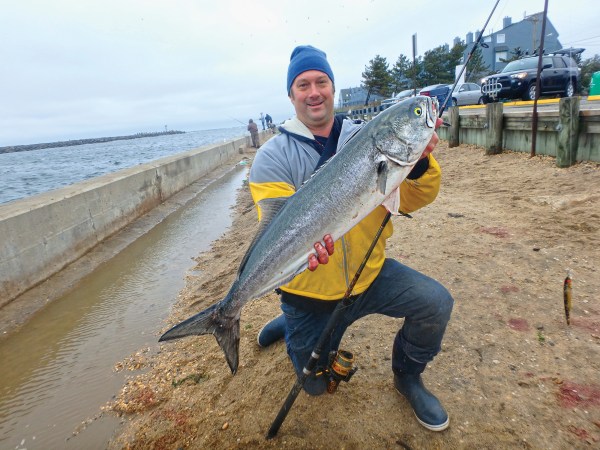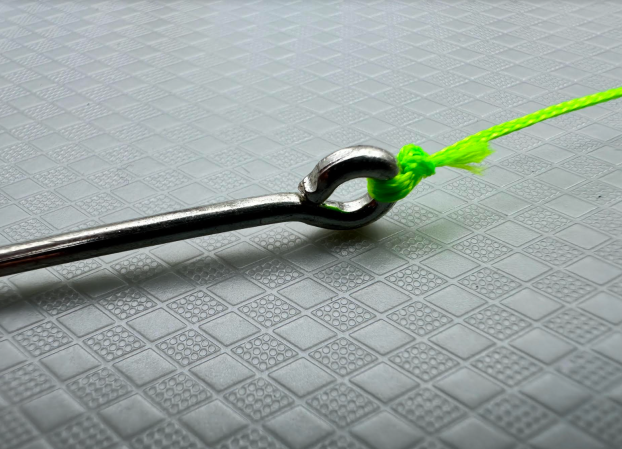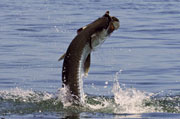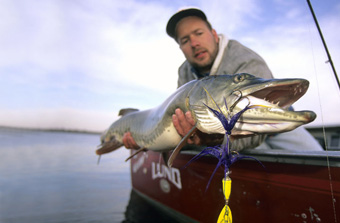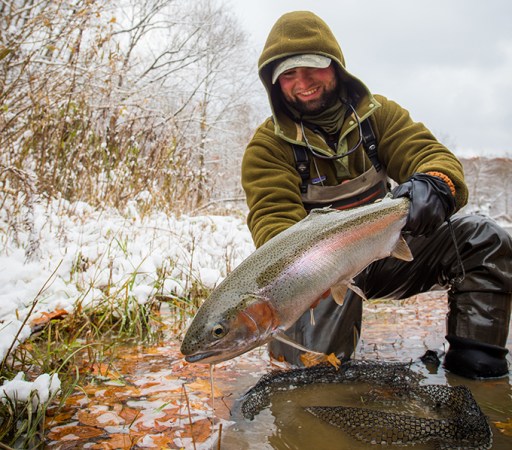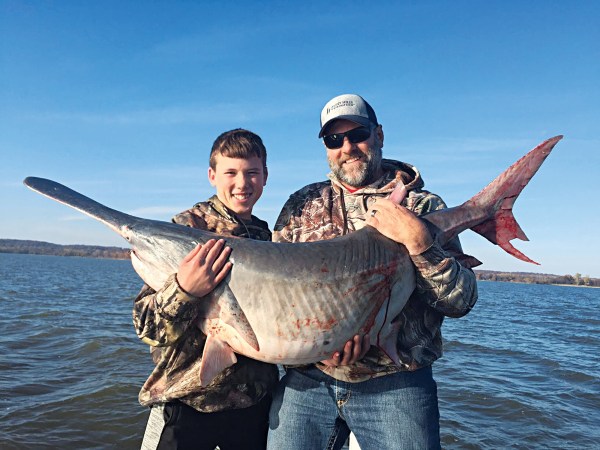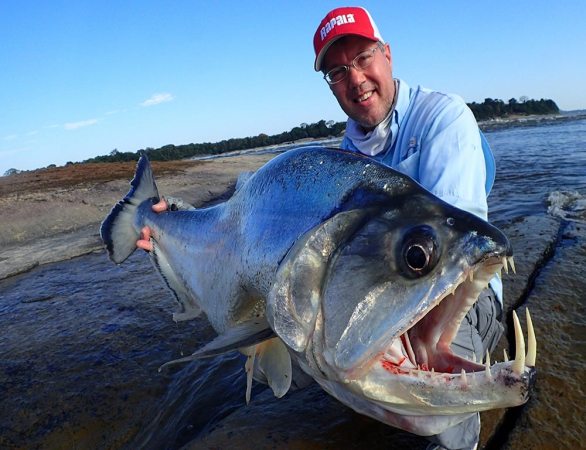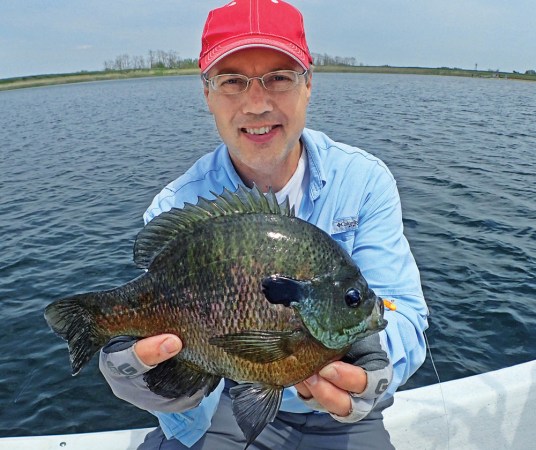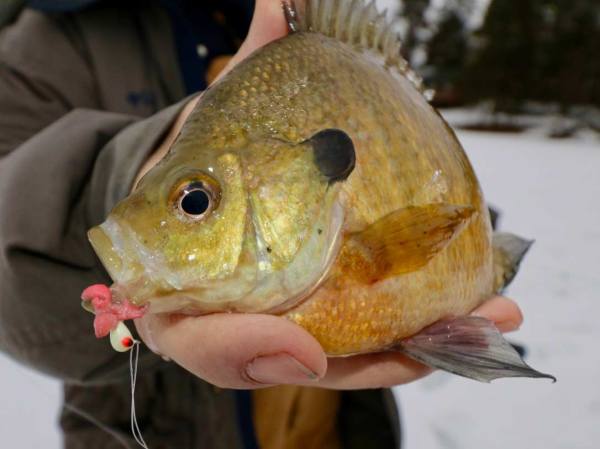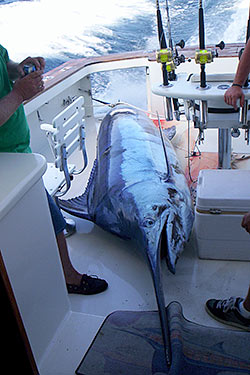I firmly believe that getting stuck with a hook is a rite of fishing passage. If it’s never happened to you, then I question if you’re really fishing as often as you should be. And for the record, I’m not talking about a little in-and-out poke. That’s lame. It doesn’t count. I’m talking embedded past the barb. I’m talking about agonizing over that critical decision—do I push it through and clip the point, yank it out the way it went in, or seek professional medical attention?
In a sport where sharp, pointy things are always laying around and flying through the air, getting jabbed by a hook just kind of comes with the territory. I’d call it an obvious eventuality. But there are other fishing injuries that are less obvious despite being very common, in fact maybe more common, than random hook pokes. The difference between these and hook injuries is that they’re all avoidable with a little forethought. As for the treble hook in the back of your neck, you can’t control your buddy’s inability to look behind him before casting.
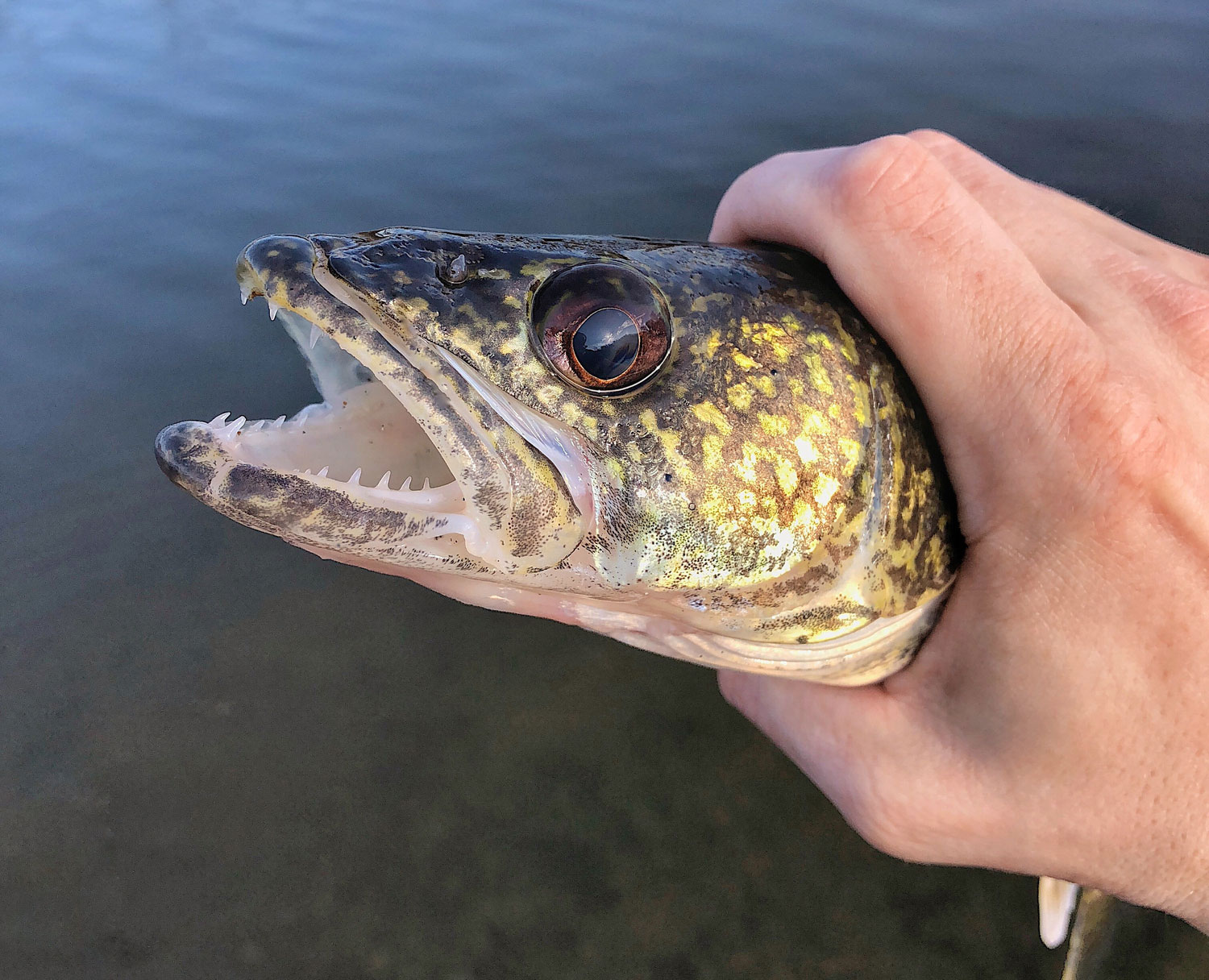
1. Grabbing a Gill Plate
One of the fastest ways to achieve an impromptu blood draw on the water is running your finger over the wrong gill plate. All fish have hardened gill plate edges that taper like a knife blade, but on most species they’re not sharp enough to cause any damage, or they’re covered with a soft protective membrane. You don’t really have to worry about the gills of species like trout, largemouth bass, crappies, and bluegills. Evolution, however, has created some fish with gill plates that are weaponized. This is the case with members of the perch family, which includes walleyes and saugers.
Not only are the edges of their plates genuinely razor sharp, but they also feature needle-like points at the ends. All of these cutting and stabbing tools are defense mechanisms designed to thwart larger predators from attacking, and if you’re not aware of them, they can ruin your day. Members of the perch family should never be grabbed around the back of the head. One flop or headshake during the hook removal process and you could be reaching for the first aid kit. Instead, lift perch and walleyes from the belly, placing your hand behind the pectoral fins.
Members of the temperate bass family, which includes white bass, striped bass, and white perch, also have gill plates sharper than a Ginsu knife, and the smaller the fish the sharper and pointier its gill plates. The best option with these species is gently lipping them to gain leverage for hook removal. Snook gill plates are so notoriously sharp that anglers often target them with extra-heavy leader, because if skinny braid or mono so much as grazes a plate edge, it gets sliced.
2. Getting Jabbed with a Fin Spine
Handle enough fish and you’re going to get jabbed by a fin spine at some point. Even tiny bluegills have sharp enough points on the ends of their dorsal fin rays to give you a poke. Most of the time, this is no big deal, but some fish pack a nastier punch with their spines than others, and where you caught a fish often dictates how worried you should be about the wound.
Like gill plates, pointy spines are a defense mechanism, and they tend to be nastier on smaller or juvenile fish. This is especially true with catfish—the most common culprit to give you a stick you won’t forget. On most catfish, it’s the thick spines on the leading edges of the pectoral fins that you need to mind. On tiny species like mad toms and bullheads, these spines are shaped like hypodermic needles. On larger species like channel cats and young blue cats, those spines are serrated. If they penetrate, the barb-like protrusions won’t allow the spine to back out of your flesh easily, and if you leave a piece of spine in your skin, it’s more likely to get infected. If that doesn’t sound bad enough, catfish spines also contain a mild venom. Although it’s not like spider or snake venom that will force you to race to a hospital, it does cause increased blood flow to the puncture site, as well as increased swelling. The result is a throbbing, stinging nightmare. (Last month, a kid from Florida had to be airlifted to a hospital after taking a catfish sting to the chest.) This is why all catfish should be held with your hand rear of the pectoral fins and leading dorsal spine.
All spine pokes should be disinfected and treated with a dab of first aid cream as soon as possible. Beyond that, these wounds should be monitored for infection, especially if you’ve been pricked by a saltwater species. Generally speaking, saltwater fish carry more bacteria that’s likely to create bigger issues than freshwater fish. Vibrio—a flesh-eating bacteria—is most commonly transmitted when an open wound is exposed to saltwater. Vibrio is rare, but Fish-Handler’s disease is more common, and often the direct result of a spine poke. Two to seven days after the injury, a bacterial infection causes a skin legion, swelling, redness, and abscesses that usually require a heavy antibiotic to cure.
3. Haphazardly Lipping a Fish
Like me, many of you have been watching Bill Dance and Hank Parker hoist bass by the lip since we were tiny tots. Though there is some debate over how lipping can cause damage to a fish’s jaw, it’s still a widely accepted method of controlling your catch, but it’s also one of the easiest ways to injure yourself. Before sticking your digits in any fish maw, you’ve got to answer two questions.
The most obvious is, What kind of fish is this? I know, I know, it seems kind of stupid, but I can’t tell you how many people I’ve watched lose a thumb tip trying to lip a bluefish or end up with a deep puncture from trying it with a pike. Truthfully, I think most of these blunders are the product of a momentary lapse of reason more than fish misidentification. Anglers often get so used to lipping striped bass and smallmouths that reaching for the mouth with their thumb is a Pavlovian response when bringing a fish to hand. However, it’s a split-second mistake that rarely gets made twice.
More important, you need to consider, What’s in its mouth, and where? Watch enough reruns of Bill Dance Outdoors, and you’ll notice that even old Bill gets timid with his lipping hand when throwing crankbaits, jerkbaits, or any lure with one or more treble hooks. Even if a multi-treble lure seems firmly glued in a fish’s mouth, it only takes one thrash or head shake for the trebles that aren’t in jaw meat to end up in your hand. In the worst-case scenario (and I’ve seen it a lot), you end up with a lure connected to your hand and a pissed off flopping fish at the same time. It’s never pretty.
Despite what bass pros do on TV, I’m a firm believer in using a landing net when fishing with lures that are loaded with trebles. If, on the other hand, you’re tossing single hook offerings like skirted jigs, flies, or a Carolina rig, try to quickly note the hook placement before you reach for the mouth. If it’s firmly planted in the roof or farther back, you’re pretty safe; if the hook is hanging on by a thread, use caution, because a lip grab will take pressure off your line fast, which could cause the lure to fly out and stick you.
4. Going Full Contact with Braided Line
Braided line offers lots of advantages over old-school monofilament. Heightened sensitivity is one of them. Strength is another. Matter of fact, braided line is so strong that long before we ever spooled it on a reel, early versions of these multi-strand lines were used to stitch Kevlar garments and in surgical sutures. Part of what made it so perfect for these applications was a complete lack of stretch, but this is also what makes it a little dangerous as a fishing line.
When you yank on monofilament to free a snag, cinch a knot, or leader a fish, it has a little give and pliability. It’s also very smooth. Conversely, while woven or spun braid may feel smooth to the touch, most of it has a little texture. Factor in its complete lack of stretch and if you pull it too tightly with your bare hands, it will slice right through your skin.
Braid nicks are no biggie, but in the right circumstances—like wrapping braid around your hand to land a big fish or free a hung lure—you’d be shocked at how quickly and deeply it can penetrate. With that in mind, any time you’re tying a knot with braid that requires you to really wrench down to cinch, wear gloves or wrap the braid around the handle or your pliers. There are even specialty knot tools on the market for this very purpose, though I personally find them to be overkill.
People often ask me whether it’s OK to tie lures and hooks directly to braided line, and in some cases it is. As examples, when flipping thick mats for bass or working lily pads for snakeheads and bowfins, you need to set the hook hard and fast, and you want to rip them out of the cover aggressively. Heavy braid gets it done. But other than these few scenarios, always add a fluorocarbon or monofilament leader to your braid. There are many advantages in terms of catching more fish, but a leader also gives you something safer to grab when landing a fish or trying or trying to get unsnagged.
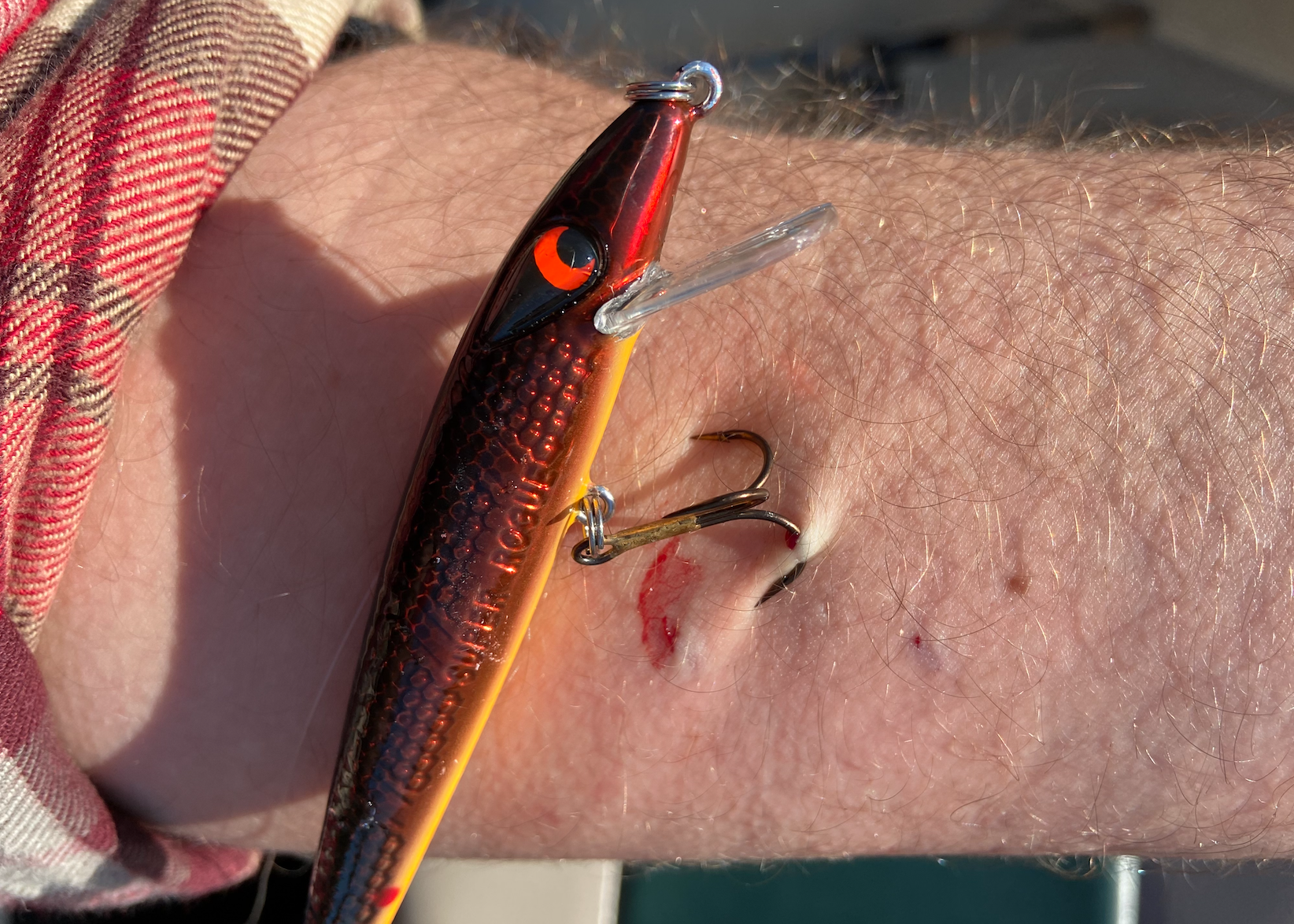
5. Being Overaggressive When Snagged
You just fired out your new $20 swimbait and a couple turns into the retrieve, wham! You set the hook with all you’ve got…only to realize you’ve just driven those trebles into a giant log or stump. What’s your initial reaction to this? For a lot of anglers, it’s pointing the rod tip straight at the snag and pulling back with all their might. I wouldn’t call it the wrong way, but there are caveats to the practice when doing it with modern tackle.
Back in the day, a straight-line pull on a snag took the stretch out of monofilament the fastest. In turn, this could create enough pressure to free a snag, bend a hook to free a lure, or at minimum, break the line off cleanly without snapping the rod tip. But new-school braided line has increased safety concerns with this method.
Because braid has no stretch, when pulled straight with force, there’s no elasticity to absorb the pressure. All you’re doing is creating more pressure on the line. Think of it like drawing the string on a bow. If the lure, hook, or weight does dislodge, it can come flying out of the water with bullet speed directly at your face.
Think this isn’t a real concern? You’re wrong. I’ve seen photos of Texas rig weights embedded in anglers’ cheeks. I’ve seen X-rays of bank sinkers lodged behind eyeballs. I’ve seen the wire arms of bottom-bouncer weights driven into chest plates. Years ago, a man was even killed by a 3-ounce sinker that flew out of the water. And the number of hooks in flesh that got there while freeing a snag are innumerable. The potential for this to occur is one of the reasons why you should always wear sunglasses when you’re fishing, even on overcast days.
If you do get hopelessly snagged and there’s no way to get closer to the obstruction to unstick your line, a safer way to get free—or cleanly break—is to point the rod at the hang-up and pull in sharp, short pumps. Don’t keep increasing the pressure by pulling back steadily until something gives. Give a hard, firm yank and then let the line slacken between attempts.
6. Failing to Prep for Filleting
Hell, even the best chefs working in the most modern kitchens suffer plenty of cuts. I’m not going to preach about knife handling safety, but I can offer some advice on prep, because in my opinion, two key things lead to stitches more often when dealing with fish butchery: your work area and the sharpness of your blade.
All fish are slippery, but some are worse than others. The slime coat on a flounder, as an example, often gets thicker and stickier after the fish dies. This can actually help it adhere to a plastic or wood cutting board more effectively. Snakeheads, on the other hand, continue generating a heavy slime coat long after death that acts more like baby oil. Regardless of the work surface, that fish will slip and slide in every direction if, that is, you don’t bother prepping.
Far too often I see folks haphazardly slap a fish on a small cooler or a boat gunwale and start hacking away. Personally, I’d rather bring the whole fish home to fillet it on an even, stable surface, even though the guts will stink up the trash. I always like to fillet with a hose and some paper towels close by to remove as much slime as possible and get the fish as dry as I can after doing so. This will stop the fish from moving as I fillet, which lessens the chances of my knife slipping. With extra-slimey species like those snakeheads, laying newspaper down over the board will also keep them in place.
Finally, the old adage holds true: a dull knife is more dangerous than a sharp knife. The more honed your blade the fewer cuts you’ll have to make. Likewise, the more easily it zips through the skin, meat, and bone, the less likely you’ll have to saw, restart a cut, grip the fish closer to the blade, or apply excess pressure to get through the ribs, all of which can lead to little slips, mistakes, and a potential trip to the ER.

